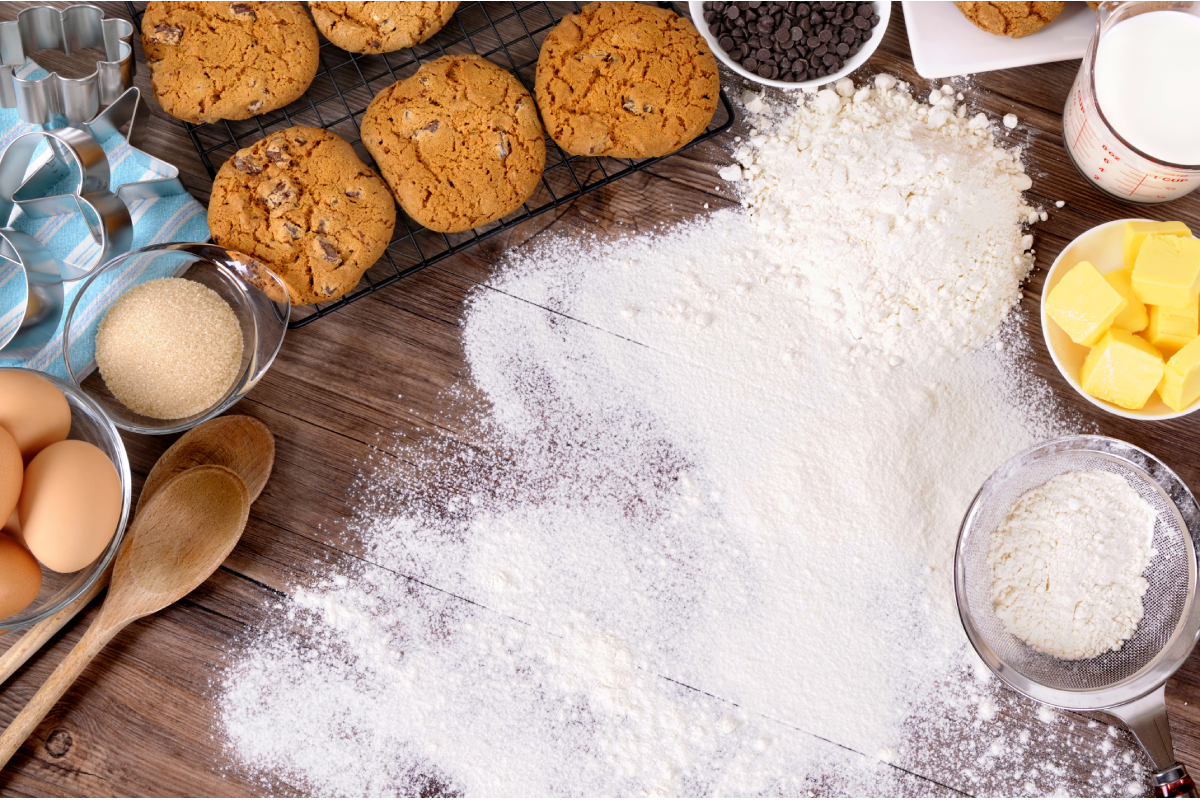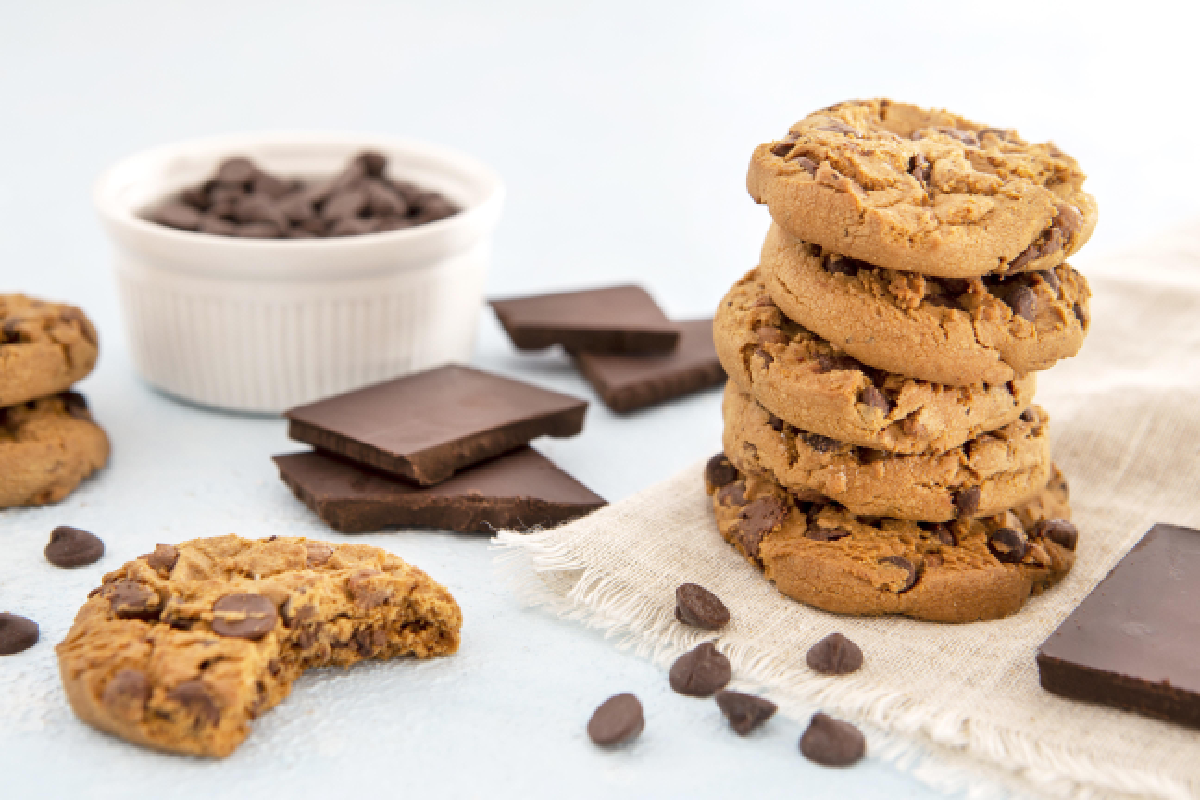Introduction to Mexican Cookies
Ah, the world of Mexican cookies—a realm where flavors burst forth in a symphony, traditions stand tall, and every bite tells a story. It’s not just about satisfying a sweet tooth; it’s a deep dive into centuries-old customs that reflect the soul of Mexico. Let’s embark on this delicious journey, shall we?
Just as the culinary world offers a variety of dishes, from the secrets of perfect Fried Chicken Without Buttermilk to the enchanting world of unicorn cakes, the realm of Mexican cookies is rich with tradition and flavor. These cookies are not just treats; they are cultural artifacts, carrying the essence of Mexican heritage and the joy of its people.
A Peek into History and Culture
At the heart of Mexican confectionery lie cookies that are much more than simple desserts; they are embodiments of history, culture, and familial bonds. Take for instance, the revered Biscochitos, a symbol of New Mexican hospitality and festivity, or the Polvorones, which crumble at the slightest touch, revealing the delicate balance of flavors perfected over generations. Each cookie, with its unique blend of spices and textures, invites you to explore the diverse landscapes of Mexico—from the bustling streets of Mexico City to the serene villages in Oaxaca.
The Cookie Panorama
The variety of Mexican cookies is staggering. Beyond Biscochitos, you’ll encounter Marranitos—molasses sweetened treats shaped like little pigs, Galletas de Nuez—nutty and buttery, and many more, each with its own story and occasion. Christmas, weddings, Day of the Dead, and even simple family gatherings are all reasons to bring out the cookie tins and fill the air with the aroma of baking.
In this exploration, we’re not just tasting; we’re learning, sharing, and celebrating the rich tapestry that Mexican cookies weave into the cultural fabric of the country. So, grab your apron, and let’s dive into the sweet, spicy, and irresistibly crumbly world of Mexican cookies. With each recipe and story, we uncover the warmth and creativity that define Mexico’s culinary heart.
Stay tuned as we delve deeper into the traditional recipes, uncover the secrets behind the iconic Biscochitos, and discover how to bring the magic of Mexican cookies into your own kitchen. It’s a journey of flavor, heritage, and the simple joy of baking that brings people together, transcending borders and generations.
Traditional Mexican Cookies
In the same way that our article on Unicorn Cake: 7 Secrets unveils the magic behind a popular dessert, the section on Biscochitos reveals the traditional secrets behind New Mexico’s beloved cookie, showcasing how culinary traditions are cherished and passed down through generations.
Biscochitos: The Official State Cookie of New Mexico
When it comes to traditional Mexican cookies, Biscochitos reign supreme. Officially recognized as the state cookie of New Mexico, their history is as rich as their flavor. Originating from the Spanish settlers, Biscochitos carry with them the legacy of cultural fusion, adapted over centuries to become a beloved staple in New Mexican households, especially during festive seasons.
Historical Backdrop
Imagine, if you will, the Spanish settlers arriving in New Mexico, bringing with them recipes from the old world, which then intermingled with the local ingredients and traditions. This blend of cultures gave birth to the Biscochito, a cookie that encapsulates the spirit of New Mexico—resilient, vibrant, and warmly inviting.
Ingredients and Flavors That Dance on the Tongue
The key to a Biscochito’s unique taste lies in its ingredients. Anise seeds sprinkle these cookies with a whisper of licorice, a flavor that, when married with the rich, crumbly texture provided by lard, creates a cookie unlike any other. It’s a dance of savory and sweet, a testament to the complexity of Mexican cuisine.
Crafting Biscochitos
Making Biscochitos is a labor of love. The dough, crumbly and fragrant, requires a gentle hand and a bit of patience. Rolled out and cut into shapes—often stars or crescent moons—they’re then dusted with cinnamon sugar, adding a layer of sweetness that complements the anise beautifully.
A Modern Twist on Tradition
While tradition dictates the use of lard for that unmistakable texture, modern adaptations see bakers experimenting with butter or shortening, catering to contemporary tastes and dietary preferences. Additions like orange zest or even a splash of brandy enrich the cookie’s flavor profile, making each batch a new discovery.
Subheading: Ingredients Spotlight
The Role of Anise and Lard
Anise, with its distinct flavor, and lard, contributing to the cookie’s tender crumb, are the stars of the Biscochito recipe. While anise lends a hint of exotic spice, lard is key to achieving the melt-in-your-mouth texture that Biscochitos are famed for. Together, they create a flavor and texture combination that is hard to find elsewhere.
Exploring Substitutes
For those looking to adapt the recipe, butter or shortening can replace lard, offering a different but equally delightful texture. Similarly, for those who might not fancy the taste of anise, experimenting with vanilla or cinnamon can offer a new flavor perspective, proving that even the most traditional recipes can evolve with time.
In this segment of our culinary journey, we’ve delved into the heart of traditional Mexican cookies, with Biscochitos leading the way. Their rich history, unique ingredients, and the joy they bring to any occasion make them more than just cookies—they’re a celebration of New Mexican heritage, shared across tables and generations. As we continue, we’ll explore more varieties and how to bring these delightful treats into your own kitchen. Stay tuned for a dive into the art of making Biscochitos at home, where tradition meets the warmth of your oven.
Making Mexican Cookies at Home
Bringing recipes into your kitchen, much like our guide to Crafting the Perfect Unicorn Cake, this part walks readers through the joy of making Biscochitos at home, emphasizing the fusion of tradition and personal touch in baking.
How to Make Biscochitos

Venturing into the realm of homemade Mexican cookies? Brace yourself for an adventure that tantalizes the taste buds and warms the heart. Biscochitos, with their anise-scented aroma and tender texture, are a perfect starting point. Here’s how to bring this traditional treat to life in your kitchen.
A Step-by-Step Baking Guide
- Gathering Your Ingredients: Start with the basics—flour, sugar, and, of course, the all-important anise seeds and lard. These foundational elements are crucial for capturing the authentic flavor and texture of Biscochitos.
- Mixing the Dough: Cream together lard and sugar until fluffy, then beat in an egg and your anise seeds. Gradually incorporate your dry ingredients to form a crumbly dough, reminiscent of pie crust, that holds together when pressed.
- Chilling for Perfection: Wrap your dough in plastic and let it rest in the refrigerator. This step is key for ensuring the flavors meld beautifully and the dough is easy to work with. Even a short chill can make a big difference.
- Rolling and Cutting: Once chilled, roll out your dough to about 1/4 inch thickness. Choose cookie cutters that spark joy—traditional shapes include stars and crescent moons. Transfer your shapes to a baking sheet lined with parchment paper.
- Baking to Golden Perfection: Bake in a preheated oven until the edges are just golden, a sign that your Biscochitos are ready to enchant your senses. The aroma filling your kitchen will be your first reward.
- The Finishing Touch: While still warm, dust your cookies with a cinnamon-sugar mix, adding that final layer of sweetness and spice that defines a Biscochito.
Tips for Perfect Cookies
- Don’t Skimp on the Chill Time: This not only helps with handling the dough but also enhances the flavor.
- Keep an Eye on the Oven: Biscochitos should be just kissed by golden hues, not browned, to maintain their tender texture.
Subheading: Storage and Serving Suggestions
Storing Your Creations
Once cooled, Biscochitos can be stored in an airtight container at room temperature, where they’ll keep for up to a week, if they last that long! For longer storage, consider freezing the dough or the baked cookies.
Serving with Love
Biscochitos are traditionally served with hot chocolate, but they’re equally delightful with a glass of milk or as the star of a dessert platter. For an extra special treat, pair them with a homemade dulce de leche for dipping.
Making Biscochitos at home is more than just baking; it’s an act of love and a celebration of tradition. With each batch, you’re not only creating delicious cookies but also weaving a thread into the fabric of culinary heritage that stretches back generations. As we continue our journey through the world of Mexican cookies, remember that the true magic lies not just in the recipes but in the stories they tell and the memories they create.
Beyond Biscochitos: Other Popular Mexican Cookies

The rich tapestry of Mexican confectionery extends far beyond the beloved Biscochitos. Each region of Mexico boasts its own array of traditional cookies, each with its unique flavors and stories. Let’s explore some of these delightful treats that add color and variety to the Mexican cookie platter.
Overview of Other Beloved Mexican Cookies
- Polvorones: Often referred to as Mexican wedding cookies, these crumbly delights melt in your mouth, leaving a sweet, nutty aftertaste. Made with butter, powdered sugar, and nuts, Polvorones are a testament to the simplicity of ingredients creating sublime flavors.
- Marranitos (or Puerquitos): Shaped like little pigs, these “gingerbread” cookies are softer and more cake-like. Made with molasses and flavored with spices, they are a comforting treat, perfect with a cup of coffee or hot chocolate.
- Galletas de Nuez: These walnut cookies are another example of Mexico’s love affair with nuts in their baking. Rich, buttery, and often finished with a dusting of powdered sugar, they’re a festive favorite, especially during Christmas time.
Subheading: Regional Varieties
The diversity of Mexican cookies reflects the country’s varied landscapes and cultural influences. From the Galletas de Boda in the north to the tropical flavored cookies in the south, each region adds its own twist to traditional recipes, influenced by local ingredients and culinary traditions.
- Northern Mexico: Known for its hearty and robust flavors, the cookies from this region often feature nuts and are more substantial, perfect for pairing with strong coffee.
- Southern Mexico: Here, tropical fruits and spices play a significant role in cookie recipes, resulting in treats that are both vibrant in flavor and color.
Exploring the world of Mexican cookies offers a glimpse into the country’s rich culinary heritage, where each cookie tells a story of cultural fusion, regional pride, and communal joy. Whether it’s the anise-flavored Biscochitos or the molasses-sweetened Marranitos, Mexican cookies are a celebration of life’s simple pleasures, shared across generations.
As we continue our journey through the delightful world of Mexican confectionery, we are reminded of the power of food to bring people together, transcending borders and creating shared moments of joy and celebration. Stay tuned for more insights into making these traditional treats at home, where every batch baked is a testament to the enduring charm of Mexican cookies.
Exploring the variety of Mexican cookies mirrors our journey through diverse culinary landscapes, similar to the exploration of Boston Roll vs. California Roll: Showdown, highlighting the richness of culinary diversity and regional flavors.
FAQs
Exploring the nuances of Mexican cookies enriches our appreciation for this culinary tradition, echoing the insights from our Alice Springs Chicken: Gluten-Free Discoveries.
What Are the Most Popular Mexican Cookies?
The Biscochito stands out as the most cherished among Mexican cookies, particularly in New Mexico. Close contenders include Polvorones, often celebrated as Mexican wedding cookies, and Marranitos, the tender, molasses-infused treats shaped like little pigs. Each cookie proudly occupies a space in Mexico’s culinary heritage, known for its distinctive flavors and textures.
How Do You Make Traditional Mexican Cookies?
Crafting traditional Mexican cookies is an art that combines simple ingredients with profound traditions. Essential steps involve selecting high-quality ingredients such as fresh anise seeds for Biscochitos or molasses for Marranitos, meticulously mixing the dough, and baking with precision for the ideal texture. Above all, imbue each batch with joy and patience, celebrating the heritage and familial bonds they represent.
Can I Use Butter Instead of Lard for Biscochitos?
Indeed, butter can substitute for lard in Biscochitos to accommodate dietary preferences or ingredient availability. Although lard is traditional, offering a unique texture and flavor, butter brings its own richness and a subtly different mouthfeel. The essence lies in preserving the cookie’s spirit, respecting its traditional roots while embracing contemporary adaptations.
Final Thoughts on Mexican Cookies FAQs
By addressing these FAQs, we’ve peeled back layers of the delightful world of Mexican cookies, providing insights into their creation, variations, and the profound cultural significance they carry. As our exploration and baking journey continues, let’s remember that each question and answer brings us closer to the rich flavor tapestry that Mexican cookies present, inviting us to engage in a culinary tradition that bridges generations and geographies.
Conclusion
In the heartwarming exploration of Mexican cookies, we’ve traversed through time-honored traditions, delved into the delicate art of cookie-making, and celebrated the rich cultural tapestry that these confections represent. From the anise-scented allure of Biscochitos to the myriad regional specialties that dot the Mexican landscape, each cookie serves as a bearer of history, a symbol of communal joy, and a testament to the culinary ingenuity of Mexico.
Through this journey, we’ve discovered not just recipes, but stories—each ingredient, each technique, carrying whispers of generations past and present, inviting us to partake in the communal spirit of baking and sharing. As we close this chapter, let’s carry forward the warmth, the flavors, and the shared moments of joy that Mexican cookies bring into our lives, reminding us of the universal language of food that transcends borders, connecting hearts and souls across the globe.
May your kitchen be filled with the aroma of spices, the warmth of the oven, and the laughter of loved ones as you explore the delightful world of Mexican cookies—a journey that’s as much about baking as it is about celebrating life’s simple pleasures, together.

